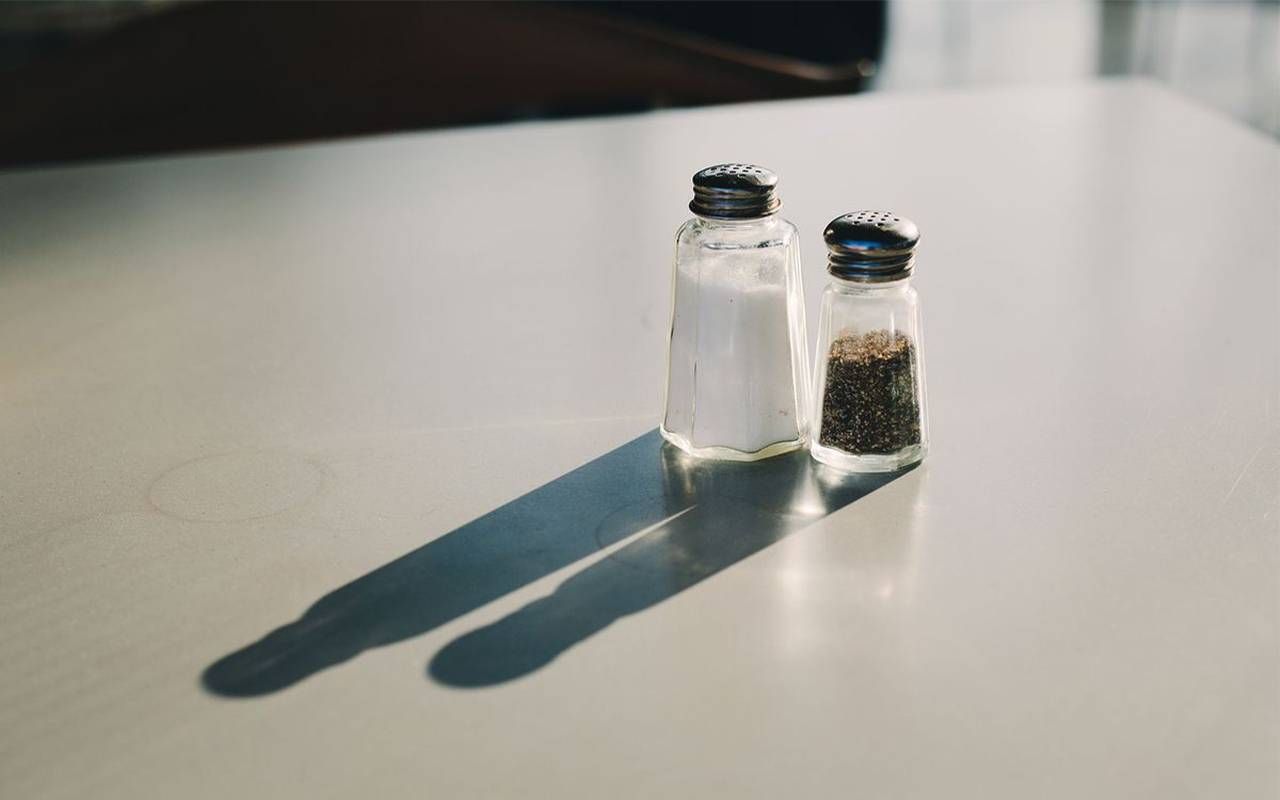Should You Pass the Salt or Take a Pass On It?
Salt can be an enemy of health, but in moderation, it's something our bodies need
The salt shaker can be a friend or foe. But can you live without any salt at all? Next Avenue asked some experts about what kinds of salt are available, how much is too much, and how we can include salt in a healthy diet.

"We need sodium, also known as salt, for our bodies to function optimally. Sodium helps with our nerve impulses and transmissions, contracting and relaxing our muscles, and helping to regulate the proper balance of water and minerals in our cells," says Angel Planells, Seattle-based RDN for the Academy of Nutrition and Dietetics.
"We need sodium, also known as salt, for our bodies to function optimally."
"We obtain sodium through our foods and drinks and lose it primarily through sweat and urine. The kidneys act as the gatekeeper to help regulate the amount of sodium that needs to be excreted in the urine."
The Harvard School of Public Health states that there is insufficient evidence to establish a Tolerable Upper Intake Level (UL) for sodium intake. Still, a Chronic Disease Risk Reduction Intake, or CDRR, lists 2300 mg daily as the maximum amount to reduce chronic disease in people 14 years or older.
Too Much Or Too Little?
A mere quarter teaspoon of table salt has around 590 mg of sodium. Coarse sea salt has 530 mg or more, and pink Himalayan salt and kosher salt are slightly lower at 460 and 480 mg, respectively.
Although the CDRR guidelines say that 2300 mg per day is optimal, others believe that number should be decreased to around 1500 mg per day.
A salad may seem healthy, but some dressings may contain 500-600 mg of sodium per serving
"2300 mg may seem like a lot, but if you start tracking your sodium intake, the average American consumes 3400 mg per day," says Planells, noting that many average sodium levels of everyday foods are pretty high. For example:
- One slice of pizza can have 600 to 1500 mg of sodium
- A fast-food burger may add 350 mg to 500 mg, with some burgers ringing in at as much as 1000 mg daily
- A can of soup can contain nearly 700 mg
- A salad may seem healthy, but some dressings may contain 500-600 mg of sodium per serving
Planells says it is essential to recognize the amounts of sodium in foods typically recognized as healthy inclusions in our diets.
"If we were to look at food labels, you can review the label and find items where 5% of daily values is considered 'low,' and 20% is considered 'high.' So the goal is to get below 2300 mg, review the foods you eat, and go from there," he explains.
When your salt intake is too high, you risk hypernatremia, a high sodium concentration in the blood. This can also happen if there is a decreased fluid intake. Along with overeating salt, hypernatremia can occur from:
- Excessive sweating
- Loss of fluid through vomiting or diarrhea
- Fever
- Diabetes
- Administration of too much intravenous saline or sodium bicarbonate
Our body monitors the amount of sodium, and the kidneys will trigger some mechanisms to help control our blood volume.
Hyponatremia, on the other hand, occurs when your blood contains too little sodium, an electrolyte that regulates the water in your cells. The causes include: drinking too much fluids, kidney or heart failure, diuretic use, and cirrhosis.
Older adults can be at risk for both hypernatremia and hyponatremia. This is because the body will try to regulate blood volume and balance through aldosterone, a hormone that helps manage sodium levels in your blood.
"Our body monitors the amount of sodium, and the kidneys will trigger some mechanisms to help control our blood volume," says Planells. However, older adults may have trouble regulating their sodium and fluid balance for several reasons, including:
- A decreased thirst mechanism: As a person ages, they sense thirst less quickly, which can be a concern.
- Renal function: If kidneys do not function at total capacity, it can be difficult for the body to regulate sodium levels.
- The older body contains less water: "It is said that 60% of a younger individual's weight is made of water, while it is 45% for an older adult," says Planells. "A slight fever, vomiting or diarrhea could place an older adult at risk for dehydration or more serious consequences."
- Medications or medical advice: Some medications can act as diuretics or even affect thirst. "If someone has been placed on a fluid restriction, they need to be mindful of their intake due to the potential for edema or the stress that it puts on the body, including the kidneys and cardiovascular system," says Planells. "Their medical providers would instruct them to get to a certain amount, based on their weight and the number of fluids to replace the amount lost through breathing, sweating and urination."
- Fear of incontinence: Some people may resist taking in fluids due to incontinence. "It gets more complicated when they have health issues like CHF (congestive heart failure) or kidney disease because they need to ensure they get enough fluids," says Planells. "I've worked with many older individuals, and they will restrict their fluid intake so they don't have to visit the bathroom. But, unfortunately, this can lead to dehydration and constipation."
Which Salt Is Best?
Salt can vary from the ubiquitous table salt to pink Himalayan salt to regional sea salts.
"Many believe that using a natural salt that is free of chemical additives, and one that has all of its natural trace elements intact is better than an alternative product that has been processed and refined by removing some of its other chlorides and having one of several additional chemicals added," says Darryl Bosshart of Redmond Inc., a salt company in Heber City, Utah.
Natural salts or processed salts can be from:
- A current ocean, such as the Gulf of Mexico, San Francisco Bay, or the Sea of Japan
- A dead sea, such as the Dead Sea in Israel or the Great Salt Lake in Utah
- An ancient sea bed, such as Himalayan Salt from Pakistan or Andean Pink from Peru
"The key in each of these is that they are all from an ocean – the only difference being the age of the ocean," says Bosshart. "This is why technically all of these salts, processed or unprocessed, are all a 'sea salt.'"
By adding chemicals to the salt to stop its ability to interact with moisture, it changes how the salt works with moisture – its main job in the body.
Salt is processed if other naturally occurring minerals with the salt are removed or chemicals are added to stop the salt's ability to interact with moisture or enhance the salt in some way.
"Both of these processes impact flavor and change how the body reacts to the salt inside the body. By adding chemicals to the salt to stop its ability to interact with moisture, it changes how the salt works with moisture – its main job in the body," says Bosshart, who grew up working for the family mineral business.
"By removing other trace elements that naturally occur along with the sodium chloride in natural salt (like potassium, calcium and magnesium), the natural 'sweet' flavor of unprocessed salt, and the potential nutritional value of the salt, also changes," he explains.
Bosshart says that it is crucial to look at the label for answers to three questions:
- What is the location and quality of the source (current sea, dead sea, ancient sea)? Knowing the location of salt can help you understand more about the salt itself. Is the salt naturally protected from pollutants? Does it contain any trace minerals?
- What has been taken from the salt, such as potassium, magnesium or calcium?
- What has been added? "Look at the ingredient list to discover if anything besides salt is added," says Bosshart. "Some salts may have been processed in ways that can impact the flavor and how it interacts in the body."
"If you focus on these three questions, you will find a great salt – no matter the brand name or the possible mention of 'sea salt' or 'natural' on the label," says Bosshart.
Personal beliefs or standards may also play into a choice of salts, such as sustainable mining, ethical labor practices or environmental impact.
Tips To Reduce Salt Intake
Finally, Planells says that there are ways you can reduce your sodium intake:
- Read the nutrition labels
- Prepare your food if possible – you control the ingredients and the sodium
- Replace the flavor of salt with sodium-free ingredients like herbs or salt-free seasonings
- Buy fresh rather than processed foods.
- Choose low- or no-salt snacks
- Control the shaker – be aware that you might add 100 to 250 mg of sodium per serving.
- Remember, garlic salt or other flavored seasonings may include sodium
- Eat smaller portions
- Ask about low-sodium options at restaurants


